The best way to experience the Burgundy region is to get out of the city and into the country. Cities like Dijon and Beaune offer so much in terms of food, shopping, and culture, but the smaller villages entice the traveler as well. In the United States if you got off the main highways and took the backroads, there would be a lot of uncertainty as to when you hit a town of any size and if you’d find anything to make you hit the brakes and explore. America has so many small town treasures, but finding them takes real effort and research or a touch of luck.
In the Burgundy region of France, however, enchanting historical villages are strung out along the roads like pearls on a necklace. You rarely go more than 5 kilometers before seeing a sign with an arrow pointing to another one just around the bend. Each one makes you want to stop and spend a few hours relishing the gardens or the history or lunch while watching the local traffic, which is frequently measured in bicycles or pedestrians.
The two unifying features of the Burgundy landscape are the vineyards and the canals. When Brad and I were in Dijon during the fall of 2007 our landlord, Max Renau chauffeured us through a tour of all the best chateaus and cellars in the region (click here to see all the fine accommodations and services Max and his wife, Beatrice, offer their renters). For this visit, he provided bicycle rental and transport 50 kilometers (about 30 miles) outside of Dijon to his home in Chateuneuf-en-Auxois so that we spend all day riding along the flat canal towpath back to our home base, the Port-du-Canal in Dijon.
The Burgundy canal is a 240-kilometer engineering feat that connected the north and south of France because no rivers ran in that direction. It allowed commerce and industry to grow in the area between the Yonne and Saône rivers. Now it services luxury and vacation barges, the Burgundian version of fifth-wheeler campers and custom RV’s.
Before pedaling a single kilometer, I promised Brad that I wouldn’t stop to photograph every bird, wildflower, or stone cottage I saw for fear that we wouldn’t reach home until long after the sun set. So this ride became a true test of will. I won’t even begin to tell about the fields of sunflowers turned toward the light, the giant wild butterfly bushes with deep Concord grape arms bowing under the weight of butterflies, and saucer-sized Queen Anne’s lace.
What really challenged the photographer in me, however, was not stopping to photograph every écluse, or lock house, that still operates along the canal. Appearing every couple of kilometers, many are still occupied. Canal service workers race up and down the towpaths on scooters tending to many of the lock operations, but often it’s a hand-operated system worked by the lock house resident or the barge residents. These stone houses with their geraniums and rose bushes and white bed sheets waving on the line at the water’s edge made me want to park my bike and start a new life that day.
Écluses (lock houses) along the canal
We rode past such charming towns as Pont-d’Ouche (the canal paralleled the Ouche River), Veuvey-sur-Ouche, and La Bussiére-sur-Ouche. Our greatest find, however, was to stumble upon an outdoor restaurant at Écluse de la Charme. But outdoor, I mean the restaurant was in one tent and the kitchen was in another. But despite the rustic atmosphere, I ate duck with mushrooms and Brad could order a bottle of wine. The lock house had a gallery of photographs showing all the wildlife in the immediate area and sold regional products such as honey.While there, we had the great fortune of watching a boat go through the lock. It was all automated and with the push of a button the process began. The boat was through the lock and on it’s way in about 15 minutes. After a lunch of good food and good conversation with a couple who lived down the road in Saint Victor-sur-Ouche (who so kindly waved to us when we passed their home later) and the young man who served us and spoke perfect English since his mother was from Birmingham, England, we were on our way as well with only one big detour at Lac Kir to watch a bit of the kayak races.

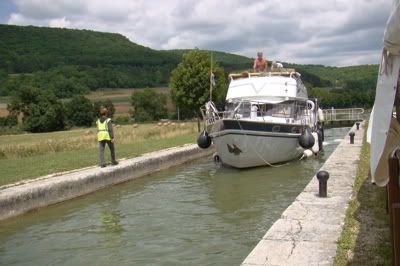
In France, life does not focus only on the largest metropolitan areas. In fact, the second largest city in France – Lyon – has only about two million people. That’s the same size as my hometown of St. Louis, MO – and to many in America a town of two million isn’t even worth visiting. No, France relishes these villages and the land that surrounds them. I lost track soon into our ride the number of people I nodded to and “bonjoured” as I pedaled. The canal was as packed with boats as the path was with bikes. Some were out for a day trip while others on land and water were clearly going the distance.
If I had my way, I’d do the whole trip all over again, only I’d take a week so I really could stop and photograph every flower and écluse, have tea at every village café, and enjoy the land while moving at the same slow pace as the water in the canal I ride beside.
Do you like traveling the back roads? Tell us about your favorite lazy trip in the comments box.
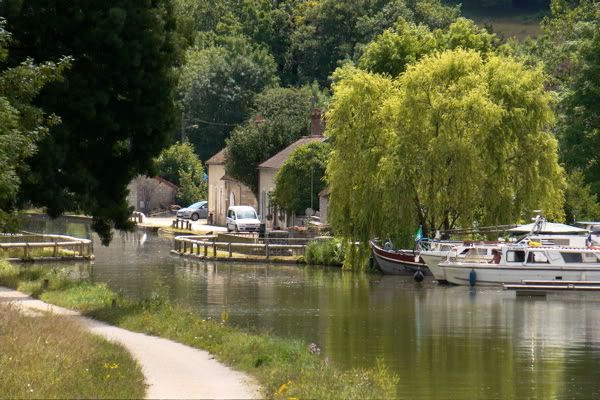

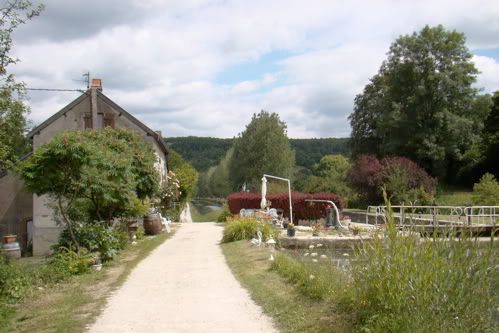
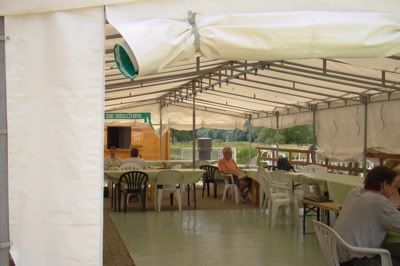
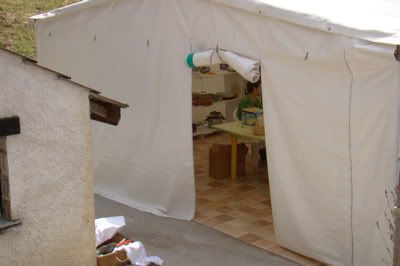
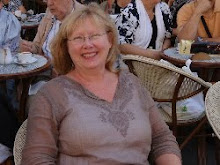



![Grace [Eventually]: Thoughts on Faith](http://photo.goodreads.com/books/1166504427s/12542.jpg)









4 comments:
Great post. I want to go slowly through someday.
We had an awesome trip! (That was a GLASS of wine, not a bottle though ... :) )
haha... Dad, these pictures are GREAT!
I meant, MOM, these pictures are really great, dad, that was a funny comment
Post a Comment